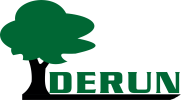Views: 4 Author: Site Editor Publish Time: 2024-03-07 Origin: Site











What is the methylene blue value of activated carbon?
Methylene blue adsorption value: It is used to indicate the adsorption capacity of activated carbon. Simply put, the methylene blue value mainly measures the decolorization ability of activated carbon. Methylene blue value is one of the important indicators for measuring activated carbon standards, in addition to iodine adsorption value and carbon tetrachloride (CTC) adsorption value. These three indicators determine the effectiveness of activated carbon and also represent the quality of activated carbon.
Iodine adsorption value: used to indicate the adsorption capacity of activated carbon to liquid substances
Carbon tetrachloride (CTC) adsorption value: used to indicate the adsorption capacity of activated carbon for gaseous substances
Generally speaking, the higher the indicator, the better the performance. Better performance does not mean better use effect. It is best to truly choose products in the right field. For example, the main reference indicators for sewage treatment plants are iodine value and methylene blue adsorption value, because they are aimed at water filtration, adsorption and water decolorization. The water quality requirements of sewage treatment plants are generally not high, so the iodine value of around 800 can fully meet the usage standards. But for things like medicine, the requirements are much higher. Of course, the higher the indicators, the better.
Generally, the methylene parameter value is between 6 and 12 ml/g, and the refined decolorized methylene blue value is between 9 and 15 ml/g. The general requirements for wood powdered activated carbon are that the methylene blue value reaches 8 ml/g and the adsorption capacity reaches 90 % or more. Generally speaking, the higher the methylene blue decolorization rate, the better the wood powdered activated carbon decolorization effect.
What Are The Differences Between Impregnated Activated Carbon And Ordinary Activated Carbon?
Application of coal-based activated carbon in environmental protection field
The Principle And Effect of Activated Carbon Adsorption of Formaldehyde
Application of coal-based activated carbon in flue gas desulfurization and denitrification
